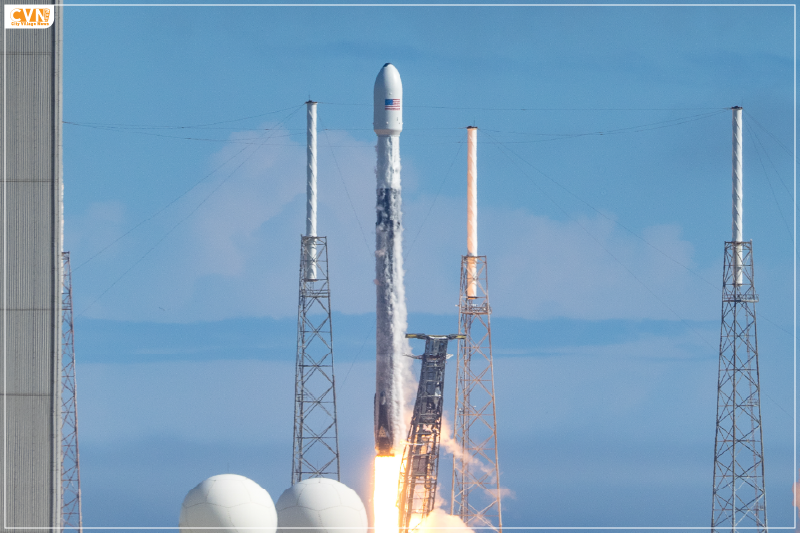On Monday evening, the skies over Cape Canaveral came alive as Amazon took a giant leap toward its $10 billion mission, launching the first operational batch of Project Kuiper satellites to bring high-speed internet to remote parts of the globe.
A United Launch Alliance Atlas V rocket lifted 27 satellites into low Earth orbit, positioned roughly 630 kilometers above Earth. This marks Amazon’s first major move in its broader plan to send more than 3,200 satellites into orbit, setting up a direct competition with Elon Musk’s Starlink network.
Amazon vs Starlink in the Satellite Internet Race
Amazon isn’t the first tech giant to eye the skies for connectivity. Starlink, operated by SpaceX, has already launched more than 8,000 satellites since 2019, with over 7,000 still active. It currently serves millions of users in over 125 countries. But while Starlink had a head start, Amazon is betting big with sharper designs, fresh infrastructure, and serious financial muscle behind the scenes.
Unlike SpaceX, which also builds and launches its own satellites, Amazon has tapped into launch providers across the globe, including ULA, Blue Origin (founded by Jeff Bezos), and Arianespace. It has locked in over 80 launches, making it one of the most ambitious commercial space plans ever.
Project Kuiper Brings Internet to the Underserved
At its heart, Project Kuiper is about inclusion. The goal is simple: bring affordable internet to remote areas where conventional networks can’t reach. With thousands of low Earth orbit satellites in place, Kuiper aims to close the gap between urban and rural connectivity.
The service is expected to go live in select regions once Amazon has around 578 satellites in orbit, eventually expanding toward the equator as more satellites are launched.
Amazon has already revealed sleek customer terminals, one about the size of a vinyl record and another, more compact, similar in size to a Kindle. Priced under $400, these terminals will allow users to connect directly to the Kuiper network once it’s active.
Technical Advances and Astronomical Concerns
The satellites launched this week are far more advanced than the two prototypes Amazon tested in 2023. Each has upgraded propulsion, phased array antennas, and inter-satellite optical links. They’re even coated with a special mirror film to reduce visibility from Earth, a nod to astronomers who’ve raised concerns about growing satellite constellations interfering with observations.
Amazon is aware of the hurdles. Yet, Rajeev Badyal, vice president of Project Kuiper, views this as merely the first step. Some lessons, he believes, only come once the satellites are in flight.
Also Read : Scientists Discover ‘Olo’: A New Color Humans Can’t See Without Technology
Challenges and Deadlines
The road hasn’t been smooth. Monday’s launch was delayed from April 9 due to weather. And overall, the project is running more than a year behind its original schedule. The Federal Communications Commission has mandated that Amazon deploy half of its constellation, 1,618 satellites, by mid-2026. That clock is ticking.
Still, Amazon presses ahead with confidence. Executive Chairman Jeff Bezos sees ample space for more than one contender in the sky. Earlier this year, he pointed out the unrelenting demand for internet, implying that both Kuiper and Starlink have room to succeed.
Project Kuiper Moves Closer to Global Coverage
Amazon plans several more Kuiper launches this year alone. Each mission will bring it closer to delivering broadband connectivity across the globe. While it still has a long way to go to catch up with Starlink, the scale of ambition and resources behind Project Kuiper make it a serious contender in the space-based internet race.
For now, 27 satellites orbit silently above us, but they carry the weight of a global promise: fast, affordable internet, no matter where you live.
Frequently Asked Questions
How many satellites will Amazon launch for Project Kuiper?
Amazon plans to deploy more than 3,200 satellites as part of Project Kuiper’s full constellation.
How many Project Kuiper satellites have been launched so far?
Amazon has launched 29 Project Kuiper satellites so far, including 2 prototypes and 27 operational satellites.
When will Project Kuiper start offering internet services?
Project Kuiper is expected to start offering limited internet services later this year.
How does Project Kuiper compete with Starlink?
Project Kuiper competes with Starlink by combining Amazon’s consumer expertise, cloud infrastructure, and global launch partnerships, despite Starlink’s early lead.
What altitude do Project Kuiper satellites orbit at?
Project Kuiper satellites orbit at about 630 kilometers above Earth.
Will Project Kuiper internet be available everywhere?
Project Kuiper will first offer coverage in select northern and southern regions, expanding globally as more satellites launch.
| Disclaimer: City Village News claims no credit for the images featured on its blog site. All the visual content is copyrighted to its respective owners only. We mention the source name of the picture whenever possible and found. However, please get in touch with us if we miss acknowledging the owner’s source. In case the owners don’t want us to use their images, we will remove them promptly. We believe in providing proper attribution to the original author, artist, and photographer. |

